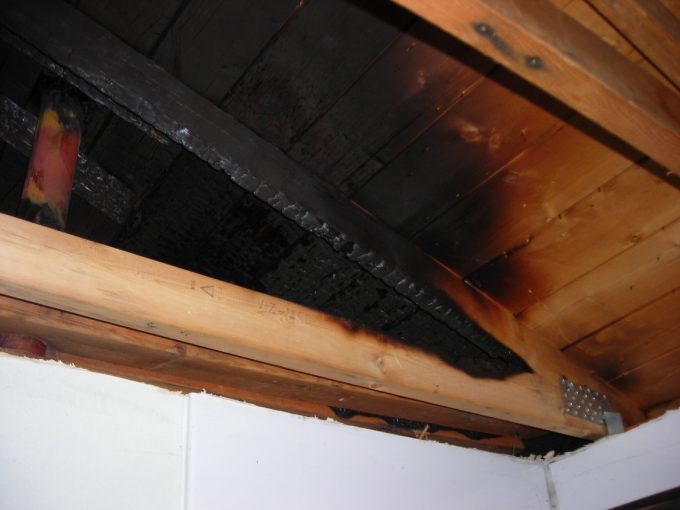
Did you ever wonder if something is still good years later? If something you own is still functional after years of use? Or if something is cracked, leaking, burned, or decayed do you question if it is still functioning properly? These are questions investigative/forensic engineers answer daily. Investigative, or forensic engineering, can be defined as the ability to determine if materials, products, or structures are still viable and functioning to their full capacity after a significant amount of time, or incident. Forensic engineering can also go into backtracking to see if a structure was designed properly in the beginning. A forensic engineer can look back and recalculate everything out like they were the ones that initially designed the structure and find what might be wrong. Investigative/forensic engineering and when they are needed for buildings, especially houses, will be our focus for this blog post.
It is okay to admit when you have no idea how to do building repairs, if an element is safe to use, if that crack is going to leak, will the house fall? These are all sufficient questions that online search platforms have done a great job of trying to answer. Hopefully, this will clarify it more. Let’s look at a residential house for the rest of this blog. The next few paragraphs will go through the construction and tasks necessary or not to be calling an engineer.
Investigative engineers do a lot of different work to determine if a structure is suitable for being livable. Structural integrity questions can arise from natural disasters, or upgrades to the structure. Upgrading a house where an engineer is needed for example would be, adding an addition, opening the floor plan, adding windows, building a deck, and so forth. Anything that is not in the original design of the house and that affects the structure.

What would need an investigative/forensic engineer?

Natural disasters or the elements, such as fires and floods, sadly can cause damage to a house.
Fire: If there is a fire in a house, and there was a wood beam that was exposed, an engineer will need to recalculate the loss of material due to the fire, determine if that beam is still reaching its capacity for the loads, or needs to be replaced. A fire can also burn down the entire wood frame while leaving the foundation alone. An engineer can determine if that foundation can be used again to rebuild the house or if it has to be replaced.
Flood: Flooding is like fire except now the beams have been submerged in water and have been soaking. If the wood is not properly dried out, then moisture can cause decay in your wood affecting the rest of your structure if the decay gets worse enough. Decay means that the timber is no longer functioning to its designed maximum capacity. This mostly occurs in darker and closed off spaces like basements and crawlspaces. If any decay is noticed in the walls or sheathing, contact an engineer to assist the damage done to see if any sections of the walls need to be replaced.

Pests: Similar to decay, in that they work in dark areas of the house, would be termites. Termites destroy the lumber in your house by eating the wood, leaving less material to hold up the house. The picture above shows how termites eat away at the wood, and that stud is no longer functioning properly. If the termites continued, the damage would affect the rest of the house due to the beams no longer being able to support the original load. Please contact an engineer if any peeling, flaking, ripping, or even less material is shown due to termite damage immediately.
Natural disasters: Without doubt hurricanes and earthquakes can have huge impacts on your home. Have a structural engineer inspect how bad the disaster affected your structure. Was there too much damage where things need to be replaced before anyone should live in it, or was the disaster superficial? Be cautious because materials and structures may not look damaged to the naked eye. They may not appear broken, just cracked, but impacts like earthquakes can overall damage the physical and chemical properties of wood.
When do you not need an engineer?
Painting: Underneath the paint; if something looks wrong, cracked or splitting, please contact a contractor to determine the next step.
Roof: Replacing your roof with the same material after the recommended time or hail season does not need an engineer. An engineer does need to be called if the roof material is changing and becoming heavier. Check with your local township departments if any necessary permits or limitations must be considered when replacing the roof.
Windows: Upgrading or replacing your windows of the same size do not need an engineer. When going to a bigger size header contact a general contractor and if anything structural is being moved, then an engineer is needed to determine how the rest of the house will be affected.
Basement: Turning your basement from unfinished to finished does not need an engineer if nothing structural is being moved. This includes things like columns, walls, windows, and so forth. Also, double check with a contractor if plumbing or electric must be moved to deem it a finished basement. These are just some of the projects done on a house that does not need to be referred to by an engineer to accomplish in certain circumstances.
Hopefully, this blog helps clarify the times needed to contact an engineer and other times when they are do-it-yourself projects with help from a contractor. When in doubt do not Google for answers, consult a professional.










